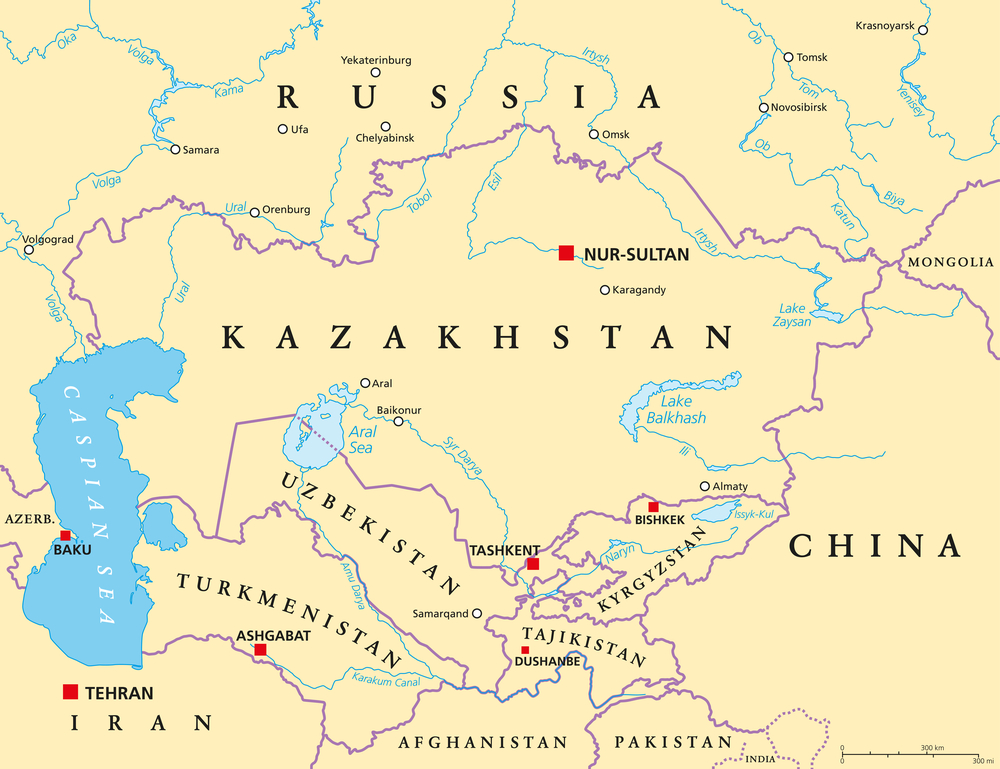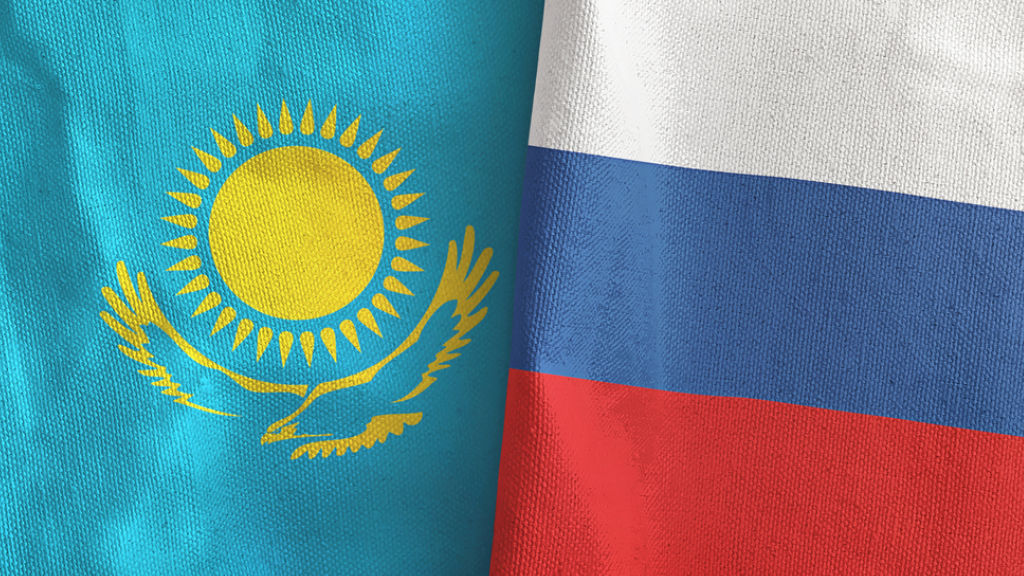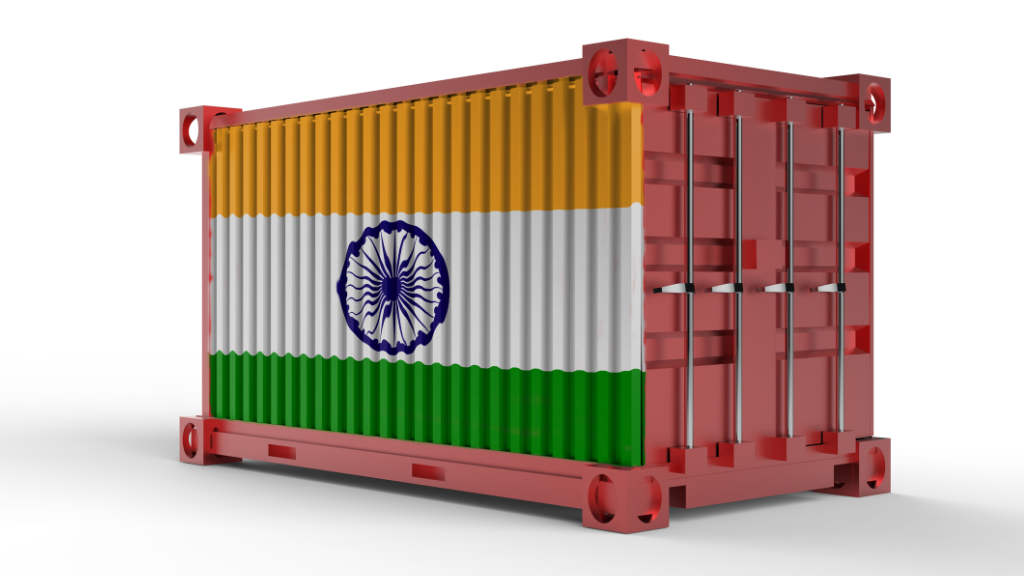The Russian President Vladimir Putin held conversations with the President of Kazakhstan, Kassym-Jomart Tokayev on 26 August. The two continued discussions of current issues of mutually beneficial bilateral cooperation and development, including in the energy sector.
Kazakhstan shares a 7,242km border with Russia, while President Tokayev owes his current position to a Russian intervention in January 2022. Economic ties have only grown since then. Like several countries, Kazakhstan’s foreign policy has become more difficult to manage since the West imposed sanctions on Russia. Tokayev is in debt to Putin following the intervention of the Russian-led CSTO, foiling an attempted coup by elements of the so-called Nursultan Nazarbayev’s family, while Kazakh and Russian security agencies retain close ties.
Under threat of third-party sanctions from the United States and European Union, Kazakhstan has pledged to uphold Western sanctions on Russia, but for every visit of Kazakh ministers to Washington to discuss sanction regulations, another visit is made to Russia to pledge continued alignment with Moscow. Meanwhile, Kazakhstan also acts as a massive transit area between Russia and China – whose own bilateral trade ties are booming.

Like Armenia, the West has threatened to impose third party sanctions on Kazakhstan for its role in Russia’s trade facilitation. Yet trade with Russia has increased since 2022. Both 2022 and 2023 have been record years for Russia-Kazakhstan economic cooperation, with bilateral trade at US$26and US$30 billion respectively. The West is concerned that this ‘could’ include the export of dual-use goods to support Russia’s conflict in Ukraine, and constantly threaten, yet do not possess the infrastructure required to actively monitor this.
The shift to Asia benefits Russia, but it also serves as a significant development for such countries as Kazakhstan. The latter’s smaller businesses as well as entire industries are now flourishing as a result of Russia’s growing interest in Asia.
However, thriving trade and investment ties are subject to wider geopolitical challenges, and there have been bumps along the way. In the case of Kazakhstan, the authorities pledged they would require exporters to file additional documents when exporting to Russia. This follows the stated concerns from the Western countries which argued that Kazakhstan might be one of the countries increasingly used by Russia to circumvent sanctions. However, a 22-fold increase in the volume of electronics exports from Kazakhstan to Russia has been subsequently been registered.
The pressure on Kazakhstan highlights the country’s geopolitical vulnerabilities. It does not want to incur Western sanctions, but Astana also deeply values cooperation with Russia and cannot flout the rules of its membership, along with Russia, of the Eurasian Economic Union (EAEU) free trade agreement.
Additionally, almost half of all foreign companies working in Kazakhstan are now Russian, and there is huge interest in Kazakhstan from Russian state-owned enterprises and private companies.
Trade
According to Trend Economy, Russia’s total value of Kazakh exports is 12.4%, while the European Union main economies account for about 34% of the total imports from Kazakhstan, with over 70% of this being exports to Italy. The United States is a minimal purchaser of Kazakh goods. In terms of imports, Kazakhstan’s main clients are Russia, with 26% of the total. The European Union sells Kazakhstan just 4.13% of its imports, while the United States supplies 4.18% of Kazakhstan’s total imports. Overall, in import and export terms, Russia is Kazakhstan’s second largest trade partner after China, its eastern neighbour. Bilateral Russia-Kazakh trade is now running at US$30 billion per annum and continues to grow. Kazakhstan is also a member, along with Russia, of the Eurasian Economic Union (EAEU) which reduces cross-border duties and tariffs on thousands of goods.
Exports from Russia to Kazakhstan are dominated by machinery, equipment and vehicles, chemical products, rubber, food products and agricultural raw materials, metals and products from them, mineral products, plant products, beverages, tobacco, plastics, ceramic, textiles, and so on. Kazakhstan sends mainly mineral products, chemical industry goods, rubber, food and agricultural raw materials, engineering products, metals and various products produced from them.
Russia is also a significant partner in Kazakhstan’s main export route, the Caspian Pipeline Consortium, which exports 79% of Kazakh crude and contributes 60% of the country’s GDP. Russia also supplies electricity (and could soon supply gas) to Kazakhstan.
Additionally, Russian SOEs also own 25% of Kazakhstan’s uranium production, after Tokayev quietly permitted the sale of important strategic licenses. At the end of 2022 Rosatom, the Russian state nuclear company, purchased a 49% stake in the company that owns two licenses for the development of Kazakhstan’s giant Budenovskoye uranium field.
Energy interdependence is growing: A US$6 billion deal announced in 2023 will see Russia build three coal plants in Kazakhstan. And during Tokayev and Putin’s meeting in Moscow in February 2024, Kazakhstan’s national oil and gas company, KazMunayGas, announced a joint venture with Russia’s Tatneft for geological exploration for hydrocarbons in the Atyrau region.
For the foreseeable future, and despite Western attempts to interfere via threats – Kazakhstan will remain in Russia’s orbit – with Astana using Beijing, not Brussels or Washington, to provide political and diplomatic balance with Moscow.
Further Reading
Russia, Kazakhstan and China Sign Agreement For A Digital Container Transport Platform





